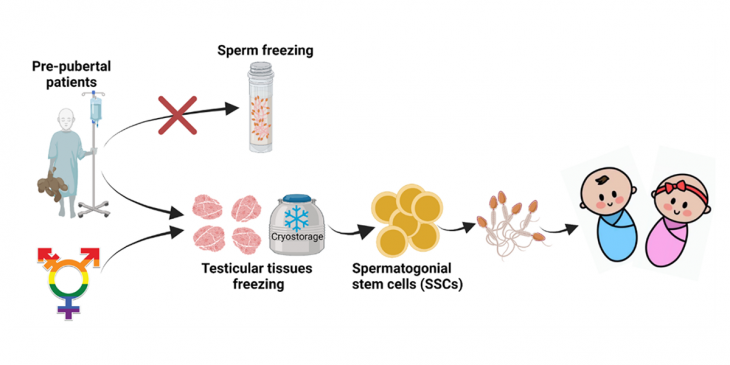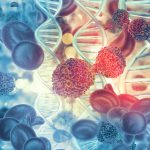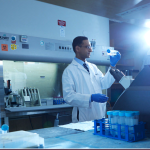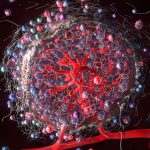When a child has cancer, their parents are rightfully focused on a cure. But that cure can come at a future cost: infertility.

Kien Tran
I am a Ph.D. candidate working in Dr. Kyle Orwig’s lab at the Magee-Womens Research Institute, which focuses on reproductive biology. In my research, I have learned that patients and their guardians are willing to pursue an experimental fertility preservation procedure when no alternatives are available. Sperm freezing is not possible for prepubescent boys, who are at risk for infertility due to medical treatments for cancers and other diseases, because they are not yet producing sperm. The only option to preserve their future fertility is testicular tissue cryopreservation (TTC).
Recently, I presented at the American Society for Reproductive Medicine’s annual meeting in Baltimore on my research regarding reproductive potential of frozen-and-thawed pre-pubertal testicular tissues. Studies that demonstrate the safety and feasibility of the testicular tissue cryopreservation protocol can help us accurately counsel patients and their families. For patients and parents who are new to this, I have put together a primer.
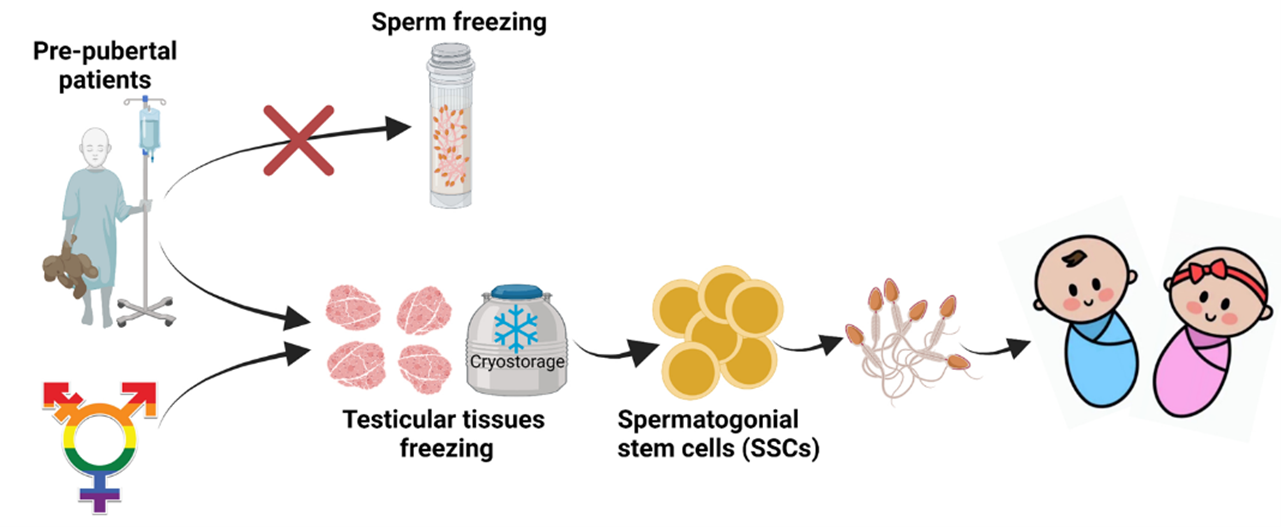
Some medical treatments cause male infertility
Radiation and chemotherapy used to treat cancers or benign diseases, including sickle cell disease and beta-thalassemia, can lead to permanent infertility. Prior to these treatments, patients should discuss fertility preservation options with their medical team if they wish to have biological children in the future.
Fertility preservation options for men and boys
My research focuses on male fertility. Adult males have the option to cryopreserve, meaning freezing in liquid nitrogen, their semen samples that contain viable sperm. A previous study demonstrated that sperm frozen up to 40 years were still able to produce healthy offspring. However, boys who are not yet producing sperm are not able to use the sperm-freezing approach. But more than 50% of cancer survivors wish to become parents in the future. What option do they have?
The stem cell pool, named spermatogonial stem cells (SSCs), in the testes emerge shortly after birth. SSCs balance self-renewing and differentiating divisions to maintain the stem cell pool in the testes, as well as producing sperm throughout a man’s life. Before puberty, SSCs do not undergo the sperm production process. Pre-pubertal boys who are not producing sperm have the option to freeze their testicular biopsy prior to their medical treatments if they desire to have biological children in the future. Each of these biopsies would be small, but they do contain SSCs that could be used for fertility restoration purposes. Upon thawing, the SSCs that exist in these tissue pieces can be matured to produce functional sperm capable of generating offspring. Many studies in mammals, including mice, sheep, pigs, cows, and even monkeys, have produced sperm from frozen-and-thawed pre-pubertal testicular tissues.
World-wide coordinated network for testicular cryopreservation as a fertility preservation option for pre-pubertal male patients
Centers around the world have joined an international effort to cryopreserve testicular biopsies for pre-pubertal patients who are at risk of permanent infertility due to side-effects of their medical treatments.
Our lab established the Fertility Preservation Program in Pittsburgh in 2010 when Dr. Orwig gained approval to begin cryopreserving ovarian tissues and testicular tissues. The Fertility Preservation Program now provides a comprehensive menu of standard and experimental fertility preservation options for adults and children. In addition to the Western Pennsylvania region, our program provides centralized processing of reproductive tissues for a coordinated network of more than 30 centers in the United States. We also collaborate with two centers in Israel. Related to my project, our Pittsburgh center has cryopreserved testicular tissues for almost 500 patients. The average patient age was 7.6 years, ranging from 3 months old to 34 years old. The diagnoses of our patient cohort include cancers (63.2%), myeloablative conditioning prior to bone marrow transplant (28.4%), gender dysphoria (3.9%) and others (4.5%).
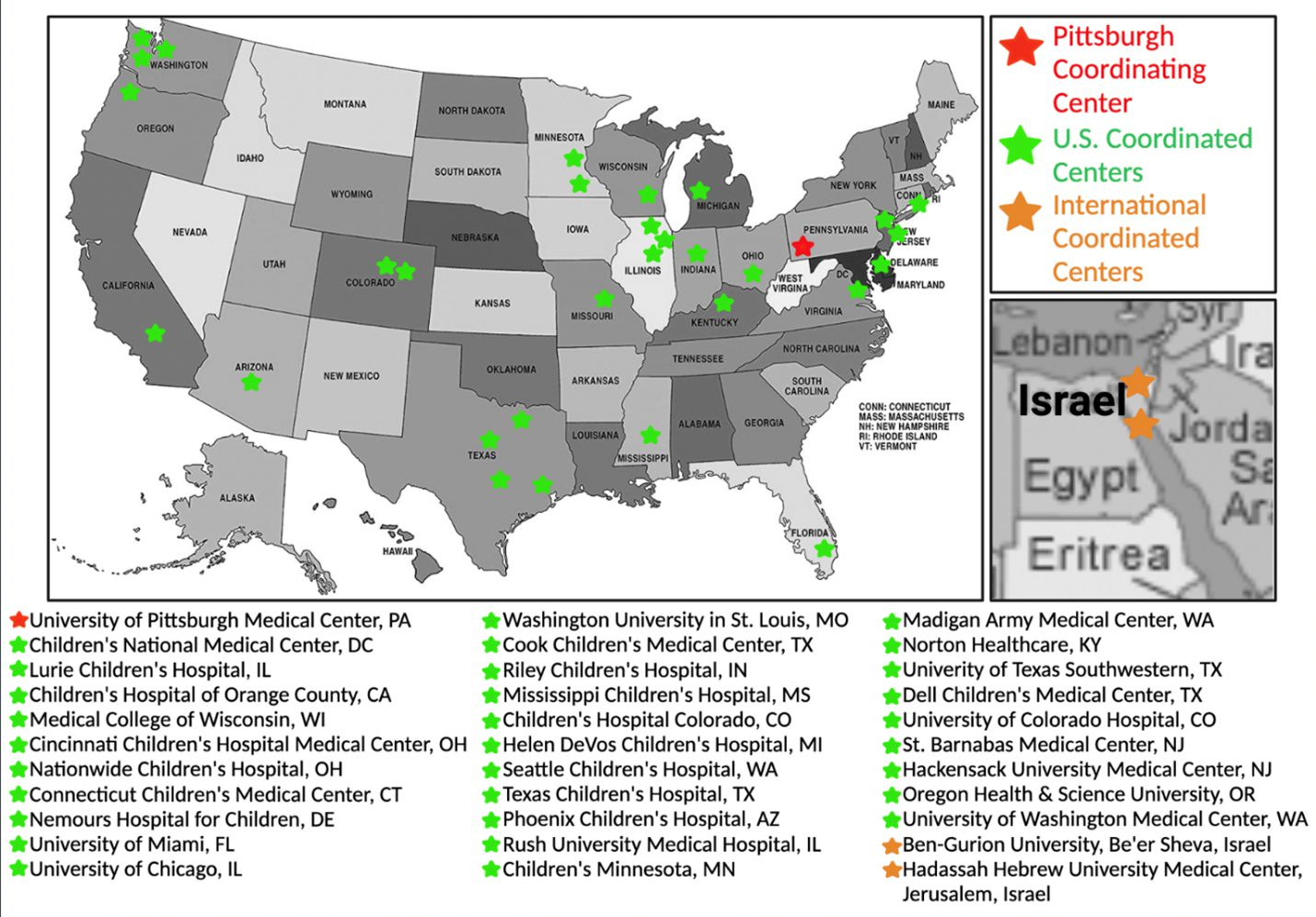
Most of our patients donated 25% of their testicular biopsy to research. This tremendous gift allows us to develop next-generation stem-cell-based technologies for male fertility preservation and restoration.
Does long-term cryogenic storage impact cell function?
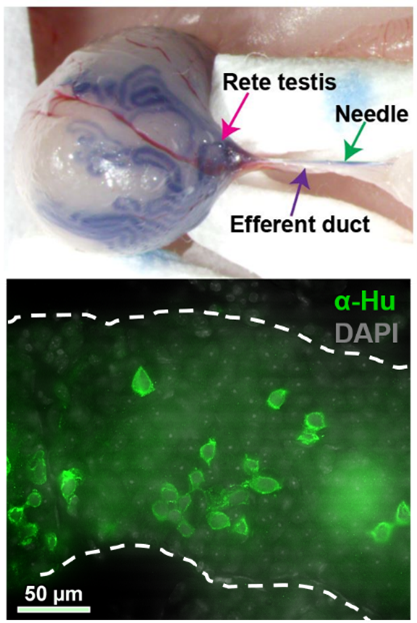
Since we have frozen testicular tissues for a decade now, we wonder whether the long-term cryogenic storage has a negative impact on cell quality. We performed an in vivo assay – an experiment conducted using a live body – by transplanting human testicular cells, isolated from frozen-and-thawed testicular tissues, into mouse testes (human cells mixed with blue dye injected into a mouse testis – top panel).
Our data revealed no difference among samples frozen for less than two years, two to four years, four to six years or eight to 10 years (SSCs stained green – bottom panel). This gives our patients assurance that their testicular tissues frozen up to a decade ago still contain functional reproductive cells that they may use to have biological children in the future, when stem-cell-based technologies are fully developed.
Does prior exposure to chemotherapy compromise reproductive function of the testes?
Even though it is best to cryopreserve testicular tissues prior to cancer treatments, more than 40% of our patients had initiated their chemotherapy and/or radiation prior to testicular tissue cryopreservation. We are curious whether this exposure compromised reproductive cell or tissue quality in these patients’ biopsies. Our result showed no difference in the reproductive cell number between the chemo-treated group versus the no-chemo control group. However, our in vivo transplantation assay, as described above, showed a decrease in functional SSCs in the chemo-treated group compared to the no-chemo control group. While SSC numbers were reduced in the chemo-treated group, we were able to recover functional SSCs from all chemo-treated and no-chemo control samples. Therefore, these findings may help us assure our patients that, while it is best to cryopreserve tissues prior to the initiation of medical treatments, even testicular samples that have undergone early-stage chemotherapy still possess some reproductive function.
Kien Tran is Ph.D. candidate in the Molecular Genetics and Developmental Biology Graduate Program at the University of Pittsburgh School of Medicine. She is participating in the UPMC Science Writing Mentorship Program.



